|
Jun
03
2024
|
|
Posted 1 years 223 days ago ago by Admin
|
|

The recent Airbus 2024 preview in France illuminated new technology and innovation the company offers across many models and lines. However, one message reiterated by leaders is that once they launch a new technology or idea, they work to ensure that it suits customers' needs. Here’s an update on what to look for this year.
Urban Air Mobility (UAM) – Making it Realistic to Identified Markets
This year, Airbus Urban Air Mobility (UAM) is focused on bringing the product to market with a start in air medical and eco-tourism services, with a geographic focus on Asia, the Middle East, and Europe. Balkiz Sarihan, CEO of the UAM division, is a leader who understands eVTOL and advanced air mobility. Her holistic approach offers a strong leadership perspective. She understands partnerships, the problems they are solving for the customer, and regulations.
Audience members of the press briefing seemed concerned that air taxis are a logical step in the process for UAM. She said, “It’s a step,” but reflected on the need for other market services first. She offered a logical approach to service delivery by reflecting on progress to date.
She shared perspectives on the air taxi concept, “I get picked up where I am and am taken where I want to go. A true on-demand service is not where we start.” She said UAM should first develop itself as a trusted service. Second, they should investigate logistics and develop infrastructure before entering the air taxi realm.
She said that 2023 was an R&D year, and in 2024, they are about execution, with “boots on the ground, building, testing,” and said the focus is on the next phase.
She noted solid international partnerships with Asia, the Middle East, and Europe. She said there are no U.S. partners at this time. However, with their goal of “the highest aviation standards,” it seems that they will be in service following test flights in the second half of the decade.
Sarihan is a businessperson who knows that a “business-viable” product is mission critical. She can entertain the thoughts of industry professionals about who, what, when, where, and how for UAM, but is logical enough to take a tentative approach. She wants to monitor battery use and its cost-effectiveness, serviceability, and maintainability. Many factors are at play in this program.
The first-generation aircraft is in production. They are investing in batteries, “cell chemistry, pouches, the architecture is being designed in a certain way,” she said. Partners include cylindrical cells from Asia. Internally, they design battery packs from the Toulouse facility. Updates regarding battery cells may be forthcoming. Hydrogen fuel-cell technology is on the horizon and is still in testing.
She sees air medical services as a logical first step in the program, followed by ecotourism. She wants the program to “directly impact communities they want to serve.” She shared that remote locations and scheduled services like rooftop-to-rooftop are not prioritized. However, ecotourism, which can include routine tourist destinations, is possible. She said UAM is low-emissions and quieter for ecotourism.
She wants to “earn and keep the trust of the public.” They are designing the first vertiports starting at Munich International Airport.
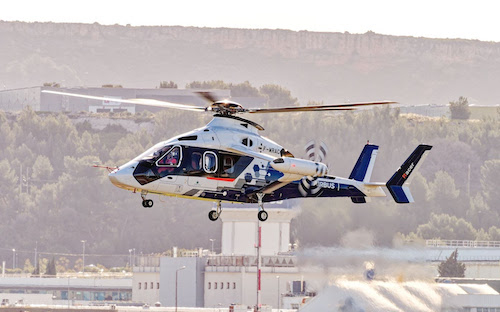
Case Study: 2024 Sustainable Aviation Fuel (SAF) Report via Helicopter Rescue Operations
Burkhard Schneider and Marlin Beuse shared information about the SAF project they are working on at ADAC Luftrettung. It is a case study of SAF in helicopter rescue operations. They covered information about SAF in helicopter operations in Germany, where they operate 37 rescue helicopter bases. Over 50 helicopters, including the Airbus H145 and EC135/H135 are in this operation. They have 170 pilots, 600 emergency doctors, and 250 helicopter emergency management technicians. They offer hoist operations and NVIS operations.
The equipment in this H145 provides intensive care transportation and winch missions. The EC135/H135 is for primary operations. Essentially, SAF stands for sustainable/alternative aviation fuels. The goal is to reduce C02 emissions by 90%. They currently use vegetable oils and residues blended with conventional Jet-A1. By 2025, the EU regulates an SAF blend of 2%, 5% in 2030, and 63% in 2050.
Both BP and Total Energies provide fuel made in Europe. They transport the fuel via multiple methods to helicopter airport locations. According to the presenters, obtaining a 2% fuel blend is easy, but obtaining higher blends is “difficult in Europe.”
The results thus far include “no noticeable abnormalities in flight; less odor during combustion, and less soot in exhaust gas.” The biggest challenge in using SAF is getting the fuel transported to the airports, which requires truck, train, etc… which adds to the cost and emissions.
RACER FLIES
As the experimental Airbus Rapid and Cost-Effective Rotorcraft (RACER) was unveiled to the group at the French preview, it was quite clear that significant progress had been made since February 2023. The aircraft was in its final assembly phase and was being prepared for power-up and first flights. The RACER is a disruptive design based on the X3 prototype that can demonstrate fast flight, agility and aerodynamics.
In late April, Airbus Helicopters’ Racer demonstrator performed its first flight in Marignane, France. The aircraft flew for about 30 minutes, allowing the flight test team to check the overall behavior of the aircraft. This important milestone launches the flight campaign which will take two years and will aim to progressively open the aircraft’s flight envelope and demonstrate its high speed capabilities.
It offers a direct-current electric generator. The presenter shared, “It is a compromise between speed (220 knots), cost, payload, and range.” It contains many innovations for better fuel use and noise reduction. The chief engineer discussed the cost reduction, which starts at the beginning by integrating mature technologies into the development and construction. He said that from a speed standpoint, it is fast, but appropriate for the size of the vehicle.
He said the piloting of this aircraft was simple and intuitive due to the similarity of the flight controls, systems, and characteristics. In theory, a pilot can be up and running in 20 minutes following a quick briefing. He said there is a 25% drag reduction, which reduces fuel burning. Finally, they have reduced the fuselage's width and improved wing design.
Airbus Support & Services Update
Romain Trapp, a highly experienced executive with worldwide aviation experience, shared updates about Airbus's support and services program. He said they are not introducing anything new this year, but will reinforce programs launched last year. Trapp said they’ve launched new products over the last few years and are ensuring the success of those programs in 2024.
They have 400,000 helicopters flying with 5,000 operators and 25 support staff focusing on supporting operators.
Their priority is to deliver safe support and solutions. Their customers are the focus, and they ensure they can fly when needed. A challenge for them is the supply chain. Obtaining product support from the supply chain over the past few years has been challenging, but Trapp said it is getting easier. He doesn’t want to introduce new support products this year because they want to strengthen the supply chain relationships. He said they must add “stock” and full-time staff at supplier locations to ensure faster delivery.
He said one issue could be the workforce and the ability of the supply chain to ramp up with more people. “When a supplier is asked to increase by 20%, 30%, or 40%, you need people. It’s hard to do in one year. It can be a bottleneck with people and machines.” The inability to rapidly add people can be tough and can delay projects. He also said suppliers could be financially challenged, especially with the backlog and long lead times. He said that with purchase orders, they used to be six months to a year out. Now, they are giving longer-term purchase orders, so it is easier for suppliers to ask banks for financing. He said they work hard to give suppliers long-term visibility so that they can better plan.
They are mining parts from older helicopters by purchasing various brands, which are dismantled. The parts obtained from these helicopters are added to inventory and made available to customers.
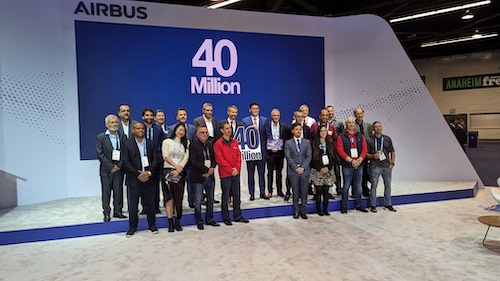
Light Helicopter Updates - 40 Million Flight Hours!
Airbus's light helicopter business is alive and well. With 200 deliveries in 2023, it’s the highest sales margin in the last decade. The fleet of light helicopters flew 1.5 million flight hours last year. One incredible benchmark, which was celebrated at the recent Heli-Expo in Anaheim, California, is that the worldwide fleet of the Ecureuil family of aircraft reached the staggering milestone of 40 million flight hours.
Another interesting direction of the company is to establish a manufacturing line for their light helicopters in India. Airbus Group is driving this effort in line with the “Make in India” initiative. The hope is that positioning the manufacturing of light helicopters in India will drive demand in that region (mostly in civil and parapublic use) and aid in financing. At minimum, the line would be designed to produce 10 helicopters per year.
Looking forward, the horizon for other initiatives in process are:
- IFR capabilities - H125 with Genesys HeliSas Autopilot will be certified by the FAA in 2024, and available to operators in 2025
- H130 new 3 Axis autopilot and will be certified in 2025
- All aircraft should be doing 100% SAF by 2030
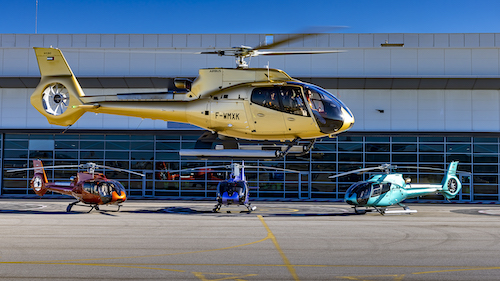
Innovation Through FlightLab & DisruptiveLab
“At Airbus, it’s in our DNA that they go from idea to realization very quickly,” says Tomasz Krysinski, head of research and innovation, at the opening of his presentation.
The logic is based on the flight plan. They pride themselves on the quick transformation of the idea: “What we do goes from the idea to the application to fulfill customers' needs. Safety drives everything.” To develop the next generation of innovations, Airbus relies on several flying laboratories (FlightLab and DistruptiveLab) to mature new technologies quickly.
Out of FlightLab in 2021 and 2022, flowed some very important innovations that included features like the Rotor Strike Avoidance System (RSAS) available to operators in 2024 and can be retrofitted, HUMS for light helicopters, and the Engine Backup System (EBS), which uses a 100Kw motor to give the pilot time to reduce the collective during engine failure. Airbus is currently seeking EASA certification of the EBS.
Another interesting development is reducing the three flight controls (cyclic, collective, pedals) to one control. They are currently testing the “Millennium” stick, one stick with more freedom. Airbus believes that when it comes to human/machine interface, pilots should be focused on the mission and much less on piloting.
The DisruptiveLab is a new demonstrator that flew for the first time in 2023, with a new architecture. This flying laboratory will evaluate an efficient propulsion system by testing a fully parallel hybrid propulsion system that enables batteries to be recharged in-flight. Its new aerodynamic architecture is intended to reduce fuel consumption by reducing mass and drag.
According to Krysinski, most helicopter performance efficiencies in the future will come by 50% aerodynamic improvements, 20% engine performance, and 30% digitalization. They have an ambitious program to reduce CO2 emissions by 50%. “We are considering industrialization and how to transfer their findings to real life and customer needs,” says Krysinski.
Helicopters currently represent less than 1% of aviation CO2 emissions, yet to try to protect the planet for future generations, Airbus has made reducing the carbon emissions of its products an absolute priority. “At Airbus Helicopters, we are committed to the IATA target of flying net zero by 2050,” states Krysinski, “This is a key driver for our innovation strategy.”
Updates on Airbus’ Helicopter Portfolio
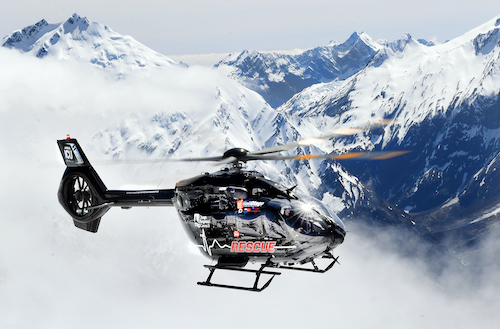
H145 Update
- 1,676 in-service aircraft
- 341 operators
- 66 operating countries
- 7.6 million flight hours
- Top six operators: U.S. Army, Metro Aviation, Air Methods, Sécurité Civile, Avincis, DRF
- 2023: Record-high yearly order intake of 186 units, including 62 H145Ms
What’s new
- Helionix ® avionics update including ADS-B IN with Lynx Transponder, new AFCS modes, incl. assisted take-off in Cat.A (Helipad), automatic height hold, Vortex warning, etc. • CVFDR (voice and video recorder) step 2 with 2 video channels
- Dual cargo hook
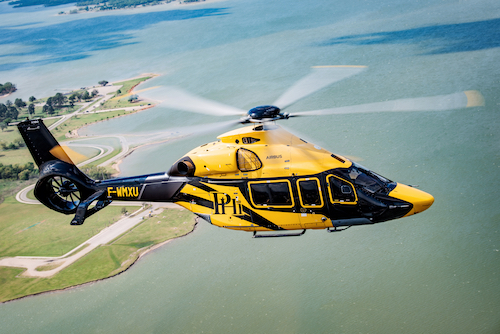
H160 Update
- 25 H160s in service
- 26 H160s ordered in 2023
- 4,000 total flight hours
- Top operators: FAA and the Transport Canada Civil Aviation Authority certification paving the way to entry into service in North America, Mexico, Philippines, Malaysia, and India. The process was launched for certification in China.
- 2023 Production – 20 H160s were produced in 2023; the target is to produce 40 aircraft per year.
What’s new
- The Safran Arrano engine reduces fuel consumption by 15%
- Blue Edge Blades deliver a 50% sound reduction
- The H160 is the first civil helicopter with a 100% composite fuselage
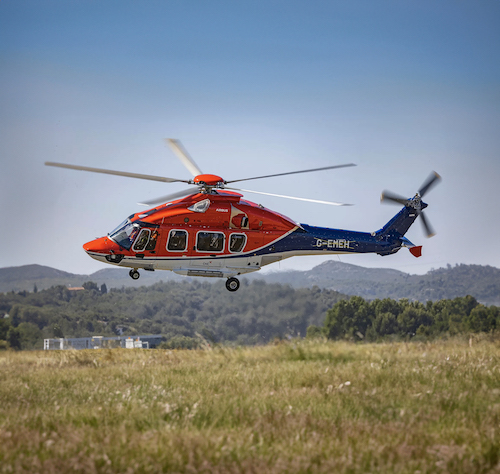
H175 Update
- 56 helicopters in service
- 14 helicopters booked in 2023
- 40,800 flight hours accumulated in 2023.
- Markets: 72% energy, 16% private and business, 12% public services
- Public services: The H175 can perform rescue operations beyond 200 nautical miles.
- Business and private aviation: Carries up to 12 passengers, has low noise and vibration, has large windows and touch screens, and fine finishes. The quietest super medium helicopter.
- Is compatible with a mix of 50% SAF in kerosene.
- Chinese certification achieved; FAA certification target 2025, TCCA certification target 2026.
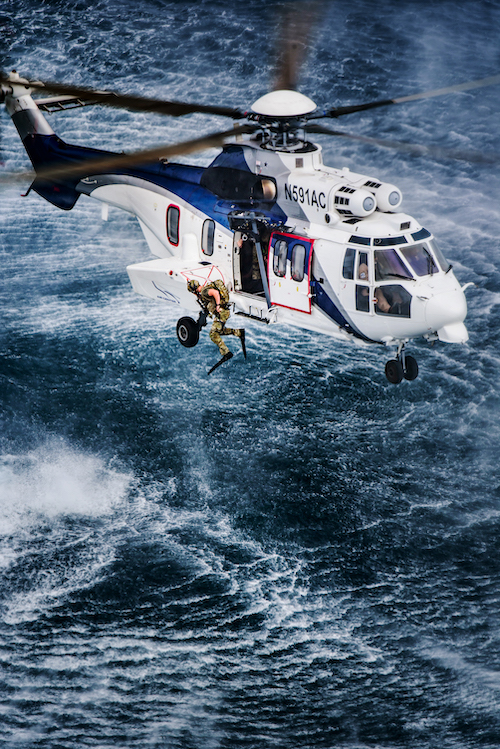
H225 Update
- 1,100 helicopters delivered
- 350 in service
- 6 million flight hours
- Mission-driven in harsh environments.
- Upgraded systems for improved: safety, cost-effectiveness, easier maintenance, and industrial processes.
- New technology tools reduce time to market; this is the heavy platform for years to come.
- Simplified maintenance system
- Crash-resistant fuel system
- Payload: 160 kg.
- Airborne communications system with 4G
- Cockpit and tail-boom camera
- New 225 avionics with the largest screens and innovative interface
READ MORE ROTOR PRO: https://justhelicopters.com/Magazine
WATCH ROTOR PRO YOUTUBE CHANNEL: https://buff.ly/3Md0T3y
You can also find us on
Instagram - https://www.instagram.com/rotorpro1
Facebook - https://www.facebook.com/rotorpro1
Twitter - https://twitter.com/justhelicopters
LinkedIn - https://www.linkedin.com/company/rotorpro1